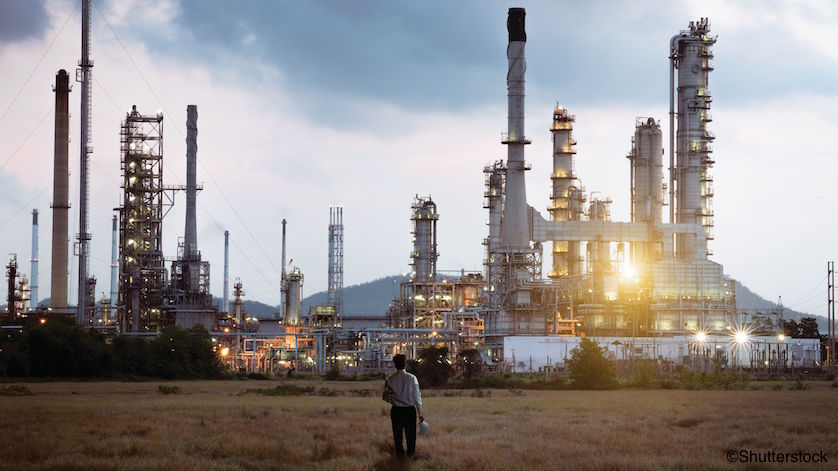
Reforming reactions in syngas (synthesis gas) plants require high heat, which takes a toll on the lifespan of furnace tubes. The higher the temperature, the shorter the tube life. Using a simple formula based on temperature measurements over time, plant operators can calculate the expired life fraction of the tube and then determine when to replace it.
Syngas plants rely on reforming reactions to obtain ammonia, hydrogen, and methanol. These chemical reactions require huge amounts of high heat. But the thin-film boundaries – around the tube, catalyst pellets, and tube walls of the furnace – hinder heat transfer. The key to plant efficiency is an optimized transfer of heat from the burners to the reaction site.
Engineers have been able to reduce the thickness of tube walls, which improves heat transfer. One way to create thinner walls is to move away from the austenitic Fe-Cr-Ni HK40 alloy to another material, such as the full austenitic Fe-Cr-Ni HP Modified alloy or the advanced Micro steel alloy. These newer metallurgies achieve better heat transfer coefficients than HK40. Syngas furnaces made of these alloys are more efficient while still allowing operations at high temperatures.
Furnace Tube Life
Most syngas plants’ furnace tubes are designed to last for 10 years (100,000 hours) working at the maximum design temperature. To create Larson-Miller curves for a particular material, tube manufacturers conduct short accelerated tests at the factory and then extrapolate the results for a longer time scale. These curves display the material’s life over time and temperature using a correlative approach, and can be used to evaluate how different operating temperatures will affect tube life. The table below shows how small temperature increases – by as little as 36°F (20°C) – can dramatically decrease the life of a typical 4-inch HK40 tube.
| Degrees F° | Degrees C° | Mean Tube Life |
| 1580 | 860 | 10 years |
| 1616 | 880 | 5 years |
| 1652 | 900 | 2.5 years |
| 1697 | 925 | 11 months |
| 1742 | 950 | 4.5 months |
| 1787 | 975 | 2 months |
| 1832 | 1000 | 4 weeks |
| 1922 | 1050 | 5.5 days |
| 2012 | 1100 | 1 day |
Determining How Much Tube Life Is Left
Equipment and turnaround downtimes are expensive. That is why plant operators need to know how much life is left in a furnace tube so that they don’t schedule shutdowns and replace parts sooner than necessary. Furnaces are sometimes run at temperatures lower than what they are designed for, and thus the tubes could exceed their lifespan. The expired life fraction of the tube can be calculated using this formula:
n1/N1+ n2/N2+ n3/N3+ ….
where:
ni is the actual time at temperature i
Ni is the mean life at temperature i
The values for ni are taken from the actual thermal history of the furnace, and those for Ni are from the Larson-Miller curve for the alloy.
A furnace’s thermal history could come from regular temperature measurements using a pyrometer, a remote-sensing infrared thermometer designed especially for high-heat or inaccessible locations. A more effective method, however, is to pair that method with a tubeskin thermocouple assembly such as the Gayesco Xtracto-Pad®. This innovative temperature measurement solution, whose range extends up to 2,300°F (1,260°C), has a moldable heat shield and a contoured thermocouple sensor to fit any furnace tube. It can compile a complete online temperature history of the tube, which helps plant operators accurately estimate how much tube life is left. This thermocouple assembly can also help determine the impact of a thermal excursion, such as flame impingement, by giving both the time and the duration of the event. Operators can then calculate the expired life fraction caused by the temperature excursion and determine its cost.
Monitoring tubeskin temperature is extremely important not only for ensuring safer startups and operations, but also for maximizing a furnace tube’s life and knowing when to replace it. Contact WIKA’s expertsfor more information about temperature measurement solutions for syngas plants, refineries, and other superheated applications.


Hi wika.us admin, Thanks for the well written post!